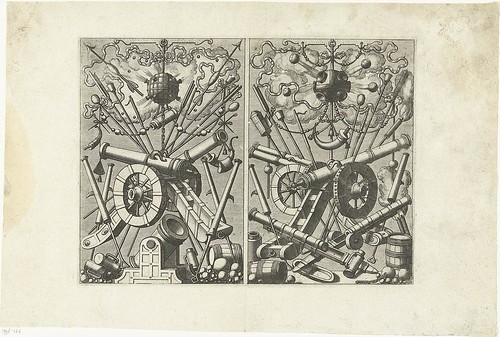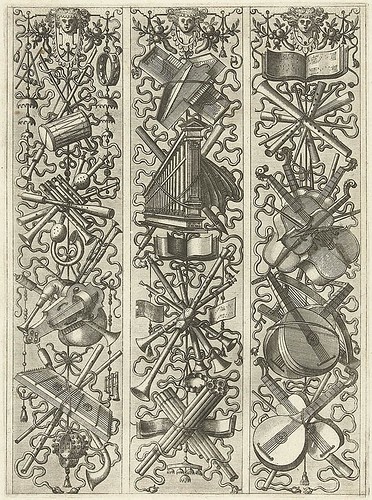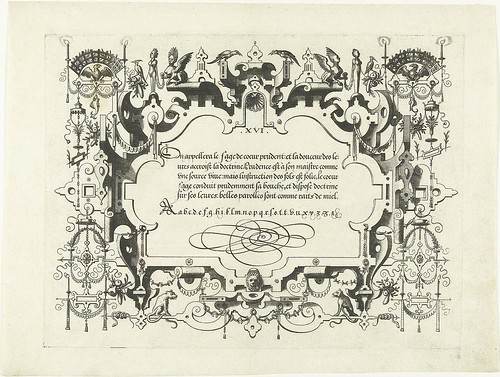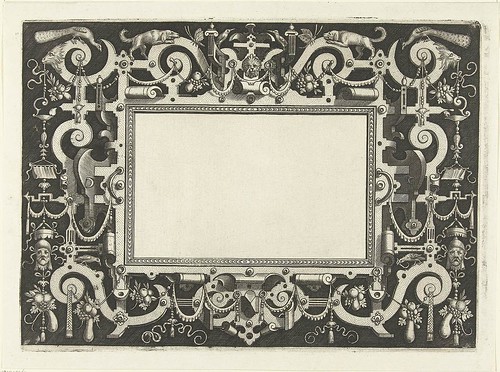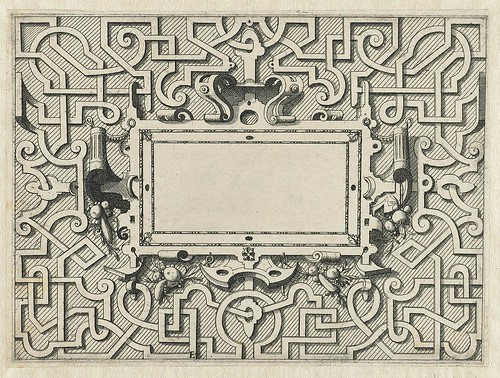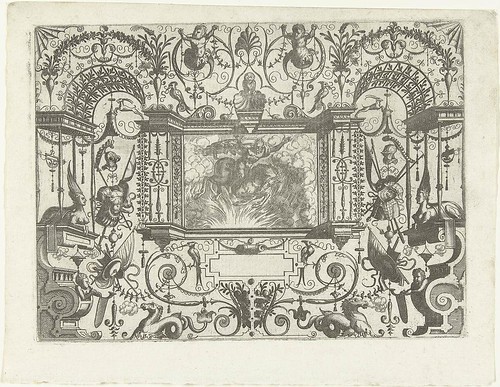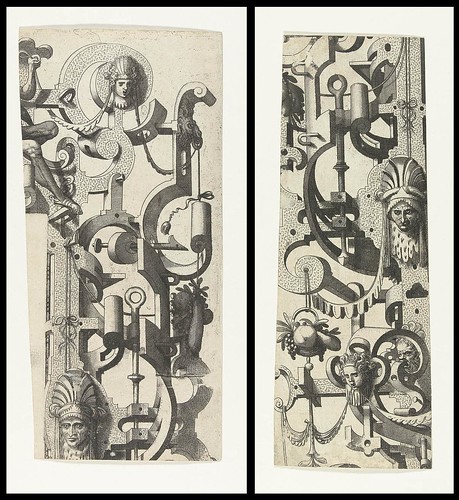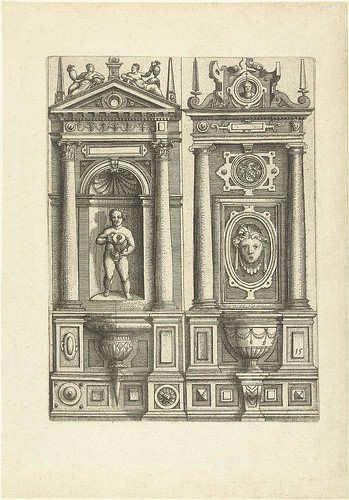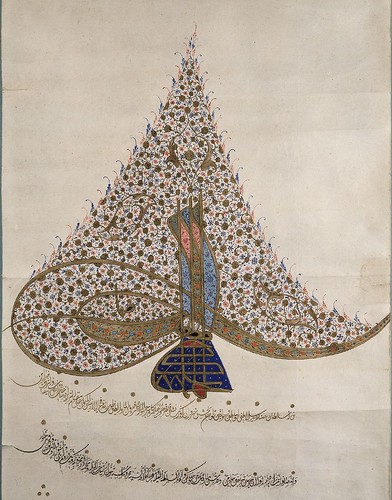
Monogram of Ottoman Sultan Achmed (Ahmed) from June 1612 on a (Dutch) Treaty of Capitulation. As best I understand it, this type of Act/Treaty or privilege essentially granted local legal protection for non-Ottoman citizens, exemption from Ottoman taxing and strengthened the trading ability of the signatory state. In part, an instrument of good will from the Ottoman Empire, these originally benign treaties came to be exploited by European states as the Empire weakened. (see: one {in Dutch, about the monogram}, two, three, four) [image spliced from segments: source]
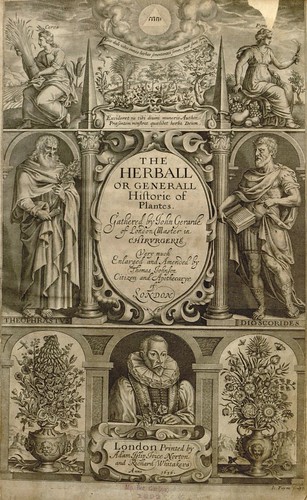
'The Herball or General Historie of Plantes Gathered by John Gerarde' - frontispiece from a reissue of the enlarged 2nd Ed. of 1636.
"Gerard, a London botanist, horticulturalist and barber-surgeon, whose own garden at Holborn contained "all the rare samples," did more than merely compile a list; he stressed the plant's medicinal qualities, drew attention to their ornamental and food values, and included extensive comments on culture and history."
"John Gerard was a member of the Barber-Surgeons' Company, but his true interest lay in botany. He published a catalogue of his garden in 1596, the first complete catalogue ever done. The appearance of the Herball was controversial. The publisher John Norton had originally commissioned Dr. Robert Priest, a member of the College of Physicians, to translate Rembert Dodoens' 'Stirpium historiae pemptades sex', first printed in 1583. Priest died before he finished the translation and the manuscript was acquired by Gerard, who finished it. He rearranged the order of the plants from the method of Dodoens to that of Matthias de L'Obel, who was asked by the publisher to correct errors, of which there were many. The book is not a straight plagiary, for it is filled with Gerard's own observations." [also]
Hosted online by
Botanicus, this frontispiece must be close in sequence to
the recently passed milestone of 1,000,000 pages now digitally available, courtesy of
Missouri Botanical Garden Library. It is far and away the most comprehensive and accessible online repository for historical books and journals on botany.
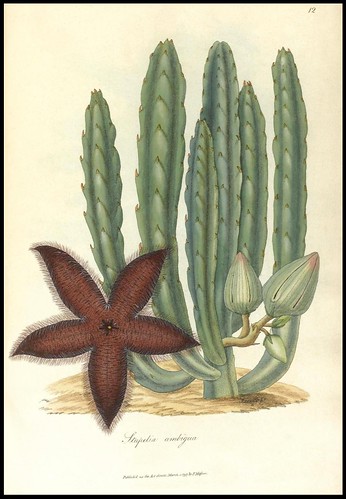
Stapelia ambigua
IN:
'Stapeliae novae, or a collection of several new species of that genus, discovered in the interior parts of Africa', by Henri Masson, 1796-1797.
"[A]n important monograph on the carrion plant. Masson was the first plant-hunter sent to Africa under the auspices of the Royal Botanic Gardens at Kew. In his introduction Masson notes that heretofore only two species of Stapelia had been noted: "In my various journeys through the deserts I have collected about forty, and these I humbly present to the lovers of Botany".
Image spliced together from screencaps from a
current Sotheby's auction.
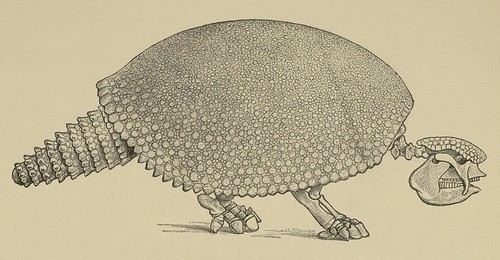
"Fig. 120.--Drawing of the skeleton of the great extinct armadillo-like animal called Glyptodon from the Pleistocene of the Argentine state in South America. The unjointed bone armour of the body, tail, and top of the head is shown. This figure is lent by the Trustees of the British Museum" (detail)
IN:
'Extinct Animals' by Edwin Ray Lankester, 1904 at SICD.
{click 'see digitalized document' then the folder icon top left for thumbnail pages}Related:
'Extinct Birds' by LW Rothschild, 1907 at Wisconsin University {click 'Display gallery view' in the sidebar)![L'Assiette au Beurre (refroidis) 1904 [coconino-world.com]](http://farm4.static.flickr.com/3029/2973685617_b3812f14d4.jpg)
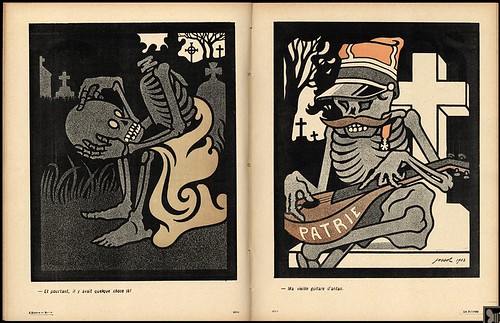
Page layouts from
'L'Assiette au Beurre' by Gustave Henri Jossot, 1904, recently uploaded by the
wonderful Coconino World site. [found
via their 2nd newsletter - you can sign up
here to get the email: it's only occasional and well worth subscribing if you like rare historic illustrations/cartoons]
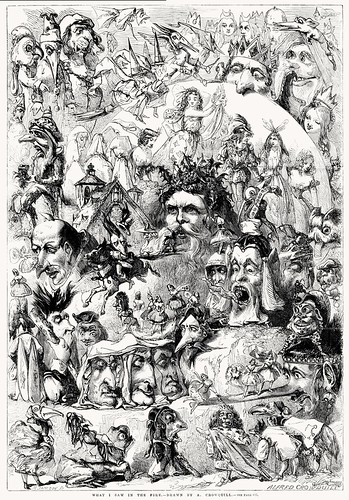
"What I saw in the Fire"
By Alfred Crowquill (pseudonym of the
Forrester brothers)
1861: I think this was published in Punch Magazine
{also sourced from
Coconino World}
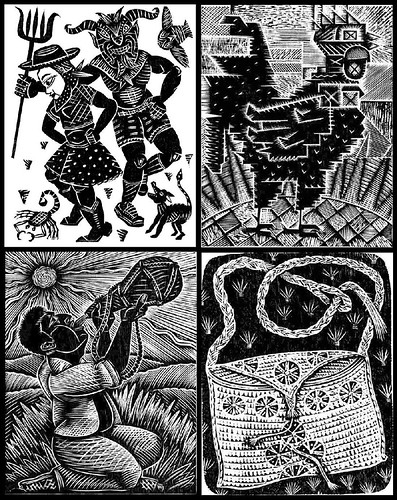
'El Carnaval', 'El Gallo', 'El Guaje' and 'El Morral'
Contemporary woodblock prints from the
Lotería Huasteca series; each print displaying "an aspect of the cultural diversity of the huasteco region in Mexico".
© Alec Dempster, a Mexican-Canadian print artist.
{via my intrepid, spider-chasing, globetrotting mate, Dinesh}
Manuscript page from the 16th century Codex Telleriano-Remensis (Mexico).
It was found among the Chicana Art Collection at Stanford University. [launch the Luna InsightBrowser
halfway down the page here. Supposedly only for campus use but, *shrug*, it works. >1,300 images available]

Coloured pencil graphite and watercolour "Sketch of Two Figures Wearing Masks and in Costume, Standing On Either Side of Corn Stalk, and Holding Staff in One Hand And Stalk in the Other", undated but ~1880-1890, by Frank Hamilton Cushing. [from somewhere in
Siris -
must be a leftover from the recent Kiowa Pochoir Prints post]
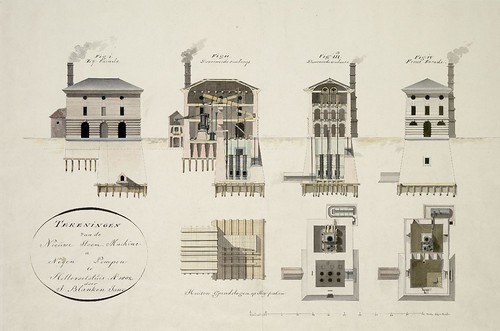
'Aquarel van stoommachine', 1802
[
detail of] Cross-sectional views - spliced together from segments - for a steam-powered factory. It's perhaps just theoretical; I can't make out what the system
actually does. [
source]
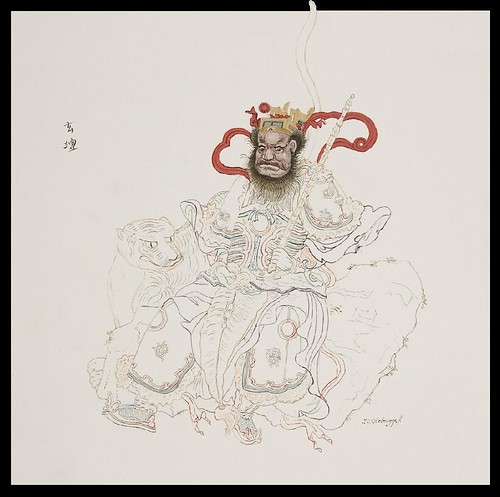
Image from spliced screencaps of an illustration in Joseph van Huerne's 'Oriental Album' (
Oosters Album) {~55 pages}.
"The Oriental Album is a jewel from the collection of Joseph collector of Huerne.
The Album (late 18th-early 19th century) illustrates especially the big fascination for the exotic from China these days. The colorful illustrations of daily life are mainly the work of three artists Bruges (Ledoulx, Steyaert, Verbrugge), but the album also includes some original Chinese documents."
Source:
Bruges Museum Print Room (click
'consulteren' in the sidebar)
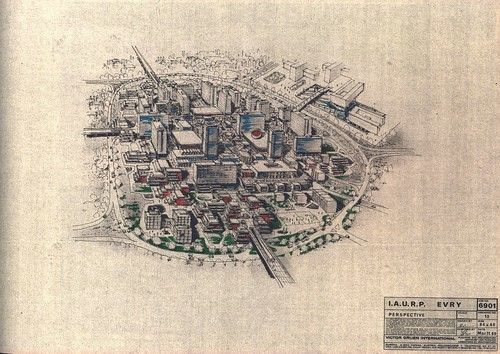
'Drawing Number 13 of Evry, France', © the Estate/Company of Victor Gruen.
(dated to 1969 according to the attached label)
From the
University of Wyoming Digital Collection [another Luna InsightBrowser set; search on creator for 'gruen, victor']
Gruen is best known for having designed the first shopping mall, for which we all should be
thankful annoyed medicated.
Also:
'Mall Maker - Victor Gruen, Architect of an American Dream' by MJ Hardwick, 2003 /
review.
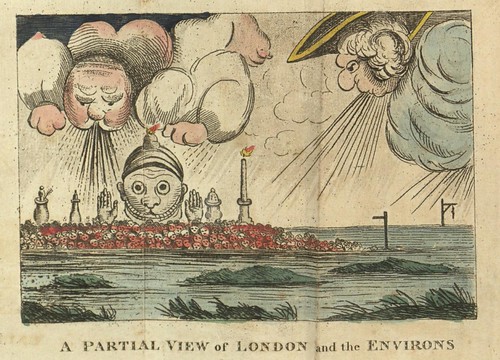
'A Partial View of London and the Environs'
IN:
'Utopia Found: being an Apology for Irish Absentees Addressed to a Friend in Connaught by an Absentee Residing in Bath', 1813 by (or published by) E Mangin.
This illustration comes from the
Image Collection at the ever excellent
Villanova University Digital Library - a great source for historic Irish material, among other things. [the whole of the
'Utopia Found' book is available at
googlebooks, but there are quite a few botched page scans]
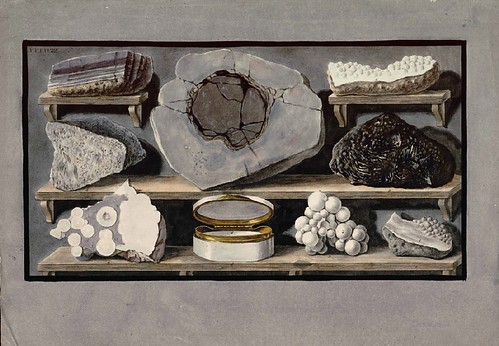
Rock fragments - Plate XXXXVIII {Hand-colored engraving after sketches
in situ by artist Peter Fabris.} IN:
'Campi Phlegraei (Burning Fields): observations on the volcanoes of the two Sicilies' by Sir William Hamilton , 1776.
The image was kindly supplied by the Harry Ransom Center at the University of Texas in Austin and belongs to a current exhibition,
'A Cabinet of Drawings', on display until 4 January 2009 (note there is video under the display frame [which I haven't watched]; also: the
press release has a bit more information)
[For the interesting background and links to all the plates -
eg. - from Hamilton's work, definitely see
this great Mefi post and
this post from the
slumbering nonist]
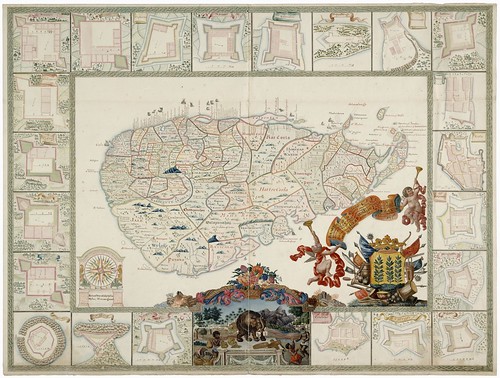
1751 map of Ceylon (Sri Lanka)
[click through to the large version; huge version is also available]
Dedicated to the Dutch Indies Governor, Gerrard J Vreeland, and signed by B van Lier, this exceptional map, surrounded by fort schematics, is very much worth seeing in high resolution, whether you are into cartography, typography or art. Really beautiful. The image was pieced together from segments [
source].
'Serendip', as it was once (very appropriately) known, was the first foreign country I ever visited and, irrespective of the ongoing internal problems, the people are some of the happiest and gentlest I've ever met. I would return without any qualms.

[click through to the large version; huge version is also available]

This assiduously researched map of Australia (all the text lower left cites their sources) is an ?1842 update of an earlier map by Adrien Hubert Brue and published by Charles Picquet IN:
'Atlas Universel de Geographie Physique, Politique, Ancienne & Moderne' [
source]
What's interesting here of course is the embedded mini-map
(the detail picture immediately above) showing a suggested 10-state naming system for Australia: I would now be a
Guelphite rather than a New South Welshman -
"Australia, according to the Proposed divisions" from The Journal of the Royal Geographical Society, Volume 8, 1838 to accompany "Considerations on the Political Geography and Geographical Nomenclature of Australia by Captain Vetch, Royal Engineers, F.R.S." {see:
one ('Australia, Proposed Divisions, 1838'),
two,
three,
four}

Act of Ratification (between French Emperor Napoleon and Dutch King) for annexation of Holland by France 1810 [
source] - spliced together from segments.
Other things...
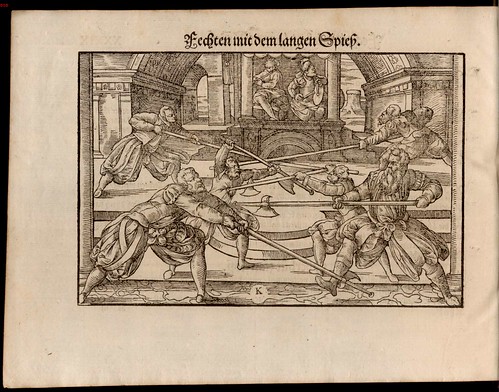
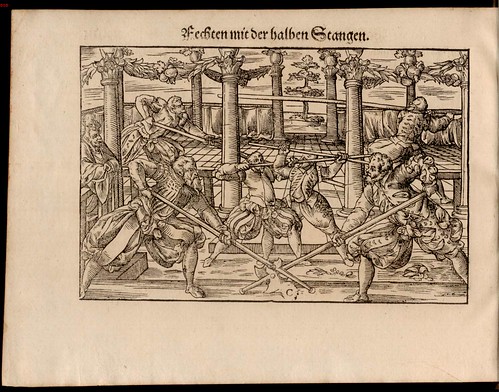



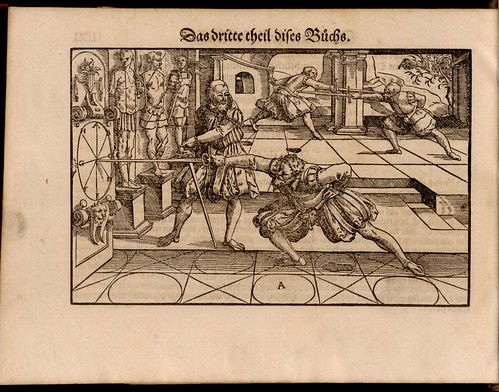

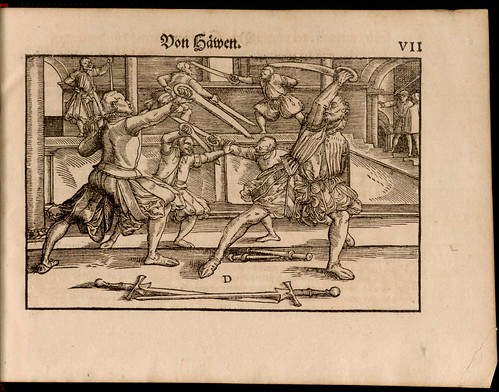

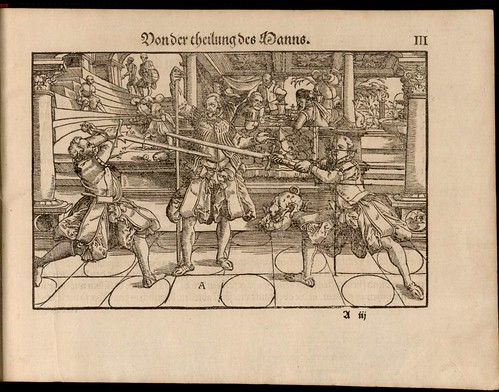

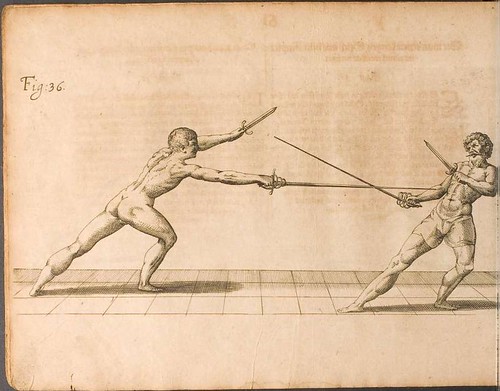
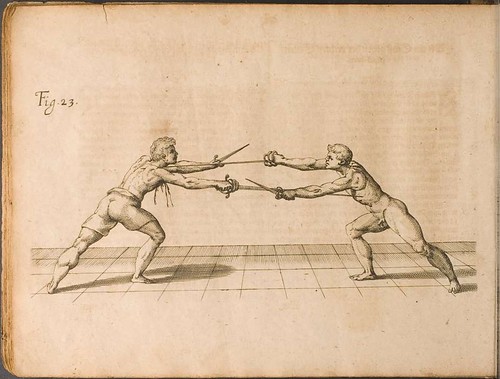
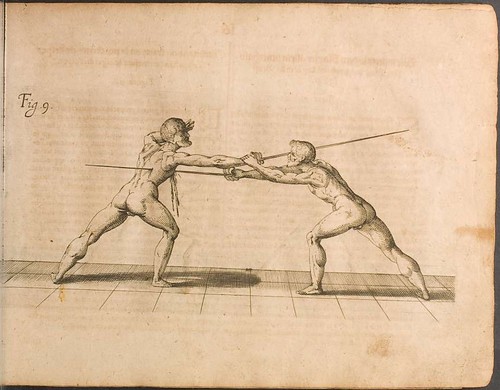
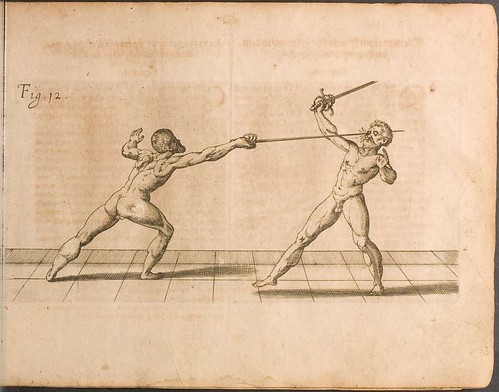

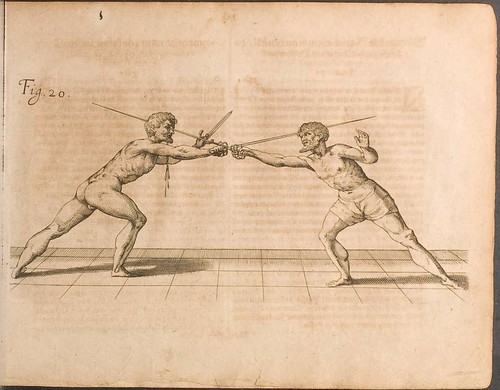




![L'Assiette au Beurre (refroidis) 1904 [coconino-world.com]](http://farm4.static.flickr.com/3029/2973685617_b3812f14d4.jpg)

















